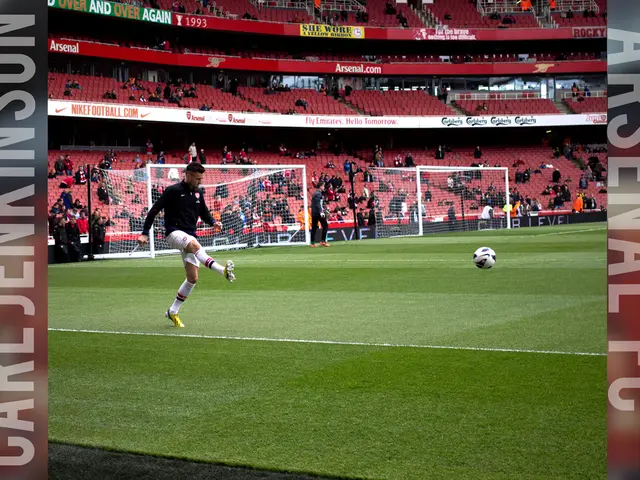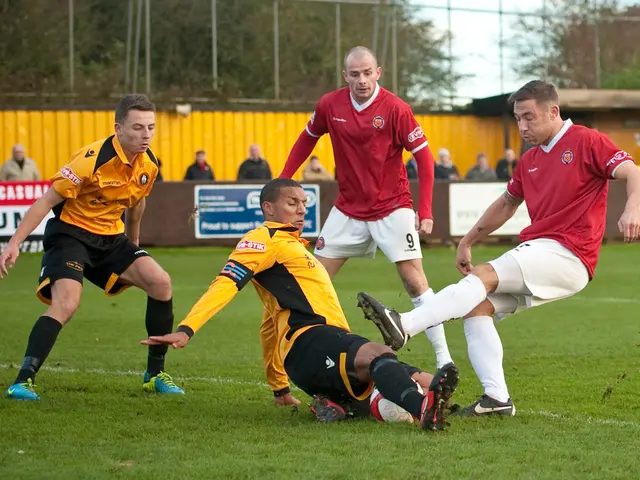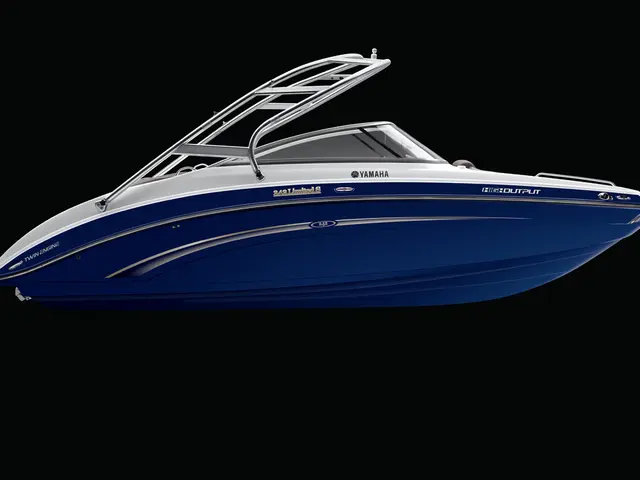The Dangerous Dance of Glaciers and Climate: A Perilous Dance for Alpine Adventurers
- Glacier recession: a beauty's demise and danger of fracture
Boot up your crampons, folks!
The once-magnificent glaciers now face a harsh reality, as the German Alpine Club (DAV) warns their resilience is waning. Ski mountaineers, too, brace for the consequences - crevasse falls on high-altitude tours became increasingly common this season. You'd think it's mid-winter, not mid-March, the DAV sighs, as glaciers should ideally be meters thick with snow.
Glacier crevasses: The silent, lethal deception
The frigid dance of ice and snow hides an invisible danger beneath thin snow covers. The DAV reports crevasse falls almost daily, a chilling indication of the shifting glaciers.
Sounding the alarm on melting glaciers
On International Glacier Day, mountaineering experts and scientists echoed their concern over the disappearing glaciers. In the Eastern Alps, experts predict their survival might soon be reliant on the strongest climate protection measures to preserve their icy existence. DAV expert Tobias Hipp laments, "Even if we do everything right, melting is inevitable."
Aesthetic Loss: When the ice melts, the magic fades
Mountain guide Stefan Winter, head of the DAV's broad sports department, mourns the loss of the extraordinary landscape that comes with the retreat of glaciers. The harmony between white glacier surfaces, shimmering blue ice, and dark rocks radiates a distinct and enchanting aesthetic.
The lingering dangers of bare rock
With the diminished snow cover, rockfall danger for mountaineers escalates as stones embedded in the ice are released. Moreover, the unabated flow of rock material from firn and rock flanks onto the glacier surface means more potential hazards lurk ahead.
Permafrost melts: The mountains shift and crumble underfoot
The retreat of permafrost, which holds the mountains together, will translate into mounting perils in the coming years, with the danger of not only rockfall but also catastrophic rockslides on the rise.
Scientists gaze with worry towards the future
Researchers worry about Germany's dwindling glaciers this spring. Glaciologist Christoph Mayer of the Bavarian Academy of Sciences notes that the winter's snowfall was 20 percent less than the long-term average.
Climate Change and Glaciers: Insights from across the world
Though data on this matter is scarce in Germany, the global impacts of climate change on glaciers provide valuable insights into potential risks for mountaineers and high-altitude tourism.
- Neglected crevasses: Thinning glaciers lead to more crevasses, increasing the potential for accidents during glacier crossings or trekking activities.
- Closed routes: Unstable or rapidly changing glacier surfaces may trigger route closures, affecting local tourism.
- Adaptive measures: Guides and operators may need to adapt routes and safety protocols to confront these newly-emerged risks.
In the end, the survival of Germany's glaciers remains uncertain. Scientists predict that the Northern Snowferner on the Zugspitze will cease to be a glacier by the end of the decade, with the Höllentalferner following close behind - perhaps to around 2035.
The disappearance of German glaciers doesn't hold direct consequences for water supplies, but the loss of large glaciers in other Alpine countries poses threats to water supply. So, buckle up, adventurers. We've got a long climb ahead.
(Sources: 1, 2, 3, 4)
- The Commission's consultation on the draft directive on the protection of the environment and the environment could potentially include measures to slow down or halt the melting of glaciers, addressing one of the causes of the perilous dance between glaciers and climate.
- As permafrost melts, it could lead to 'badw' (unabated flow of rock material) from firn and rock flanks onto the glacier surface, increasing the potential hazards for mountaineers.
- In light of the increasing frequencies of crevasse falls and the diminished snow cover, it's essential to take average weather patterns into account when planning treks or glacier tours to mitigate accidents and ensure a safer experience for all Alpine adventurers.



